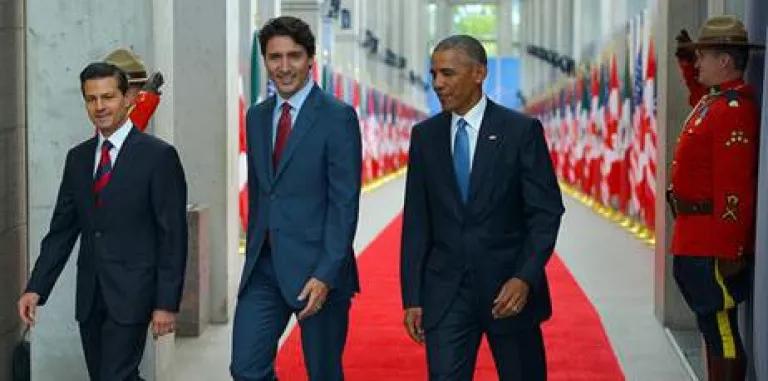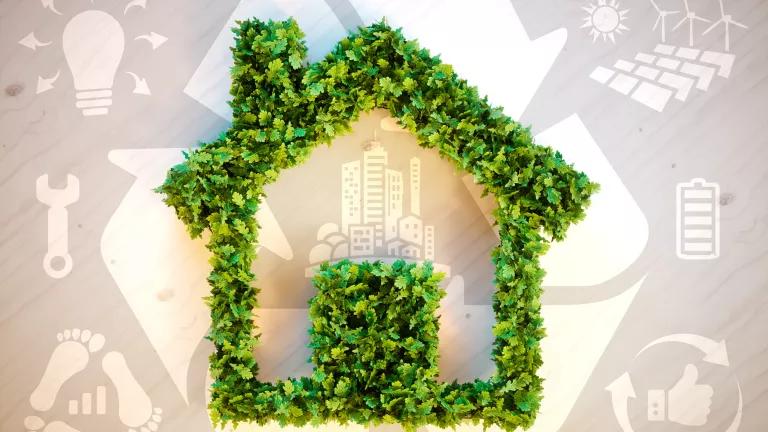What the North American Leaders' Summit Means for Mexico

Guest blog by Mauricio Barragán Esparza
Mauricio Barragán Esparza is collaborating with NRDC’s Latin America Project this summer, researching clean energy finance in Mexico. He is currently studying for a joint Environmental Management Master's and MBA at Yale University, focusing on energy markets, environmental economics and climate change. Before studying at Yale, Mauricio worked at the Department of Energy in Mexico, where he worked on the team charged with creating the new electricity market regulations as a part of the country’s 2013 energy reform. Mauricio is from Metepec, México, and has a Bachelor’s degree in economics from ITAM in Mexico City.
The North American Leaders' Summit, held during the last week of June, turned out to be an historic summit, as it was the first time that the region’s leaders aligned their actions to address climate change. This represents a great opportunity to carry out coordinated efforts and form a common front in order to promote actions to combat climate change globally.

The first of these coordinated actions to address climate change is the commitment made by the Prime Minister of Canada and the Presidents of the United States and Mexico to produce 50% of the electricity in the region from clean sources by 2025. Currently, these three countries together produce 37% of their energy from clean sources, which they define as including renewables, hydro, nuclear, carbon capture and storage, and demand reduction through energy efficiency. According to an analysis from Bloomberg New Energy Finance, before the announcement was made, by 2025 predictions said the region would meet 46% of these sources.
What does the commitment mean for Mexico?
The commitment is an important step to build the region’s leadership in addressing climate change. However, some questions remain, for example, what is the contribution Mexico will make to achieve this target? What are the implications of this agreement for Mexican energy policy? And what are the next steps to promote clean energy generation?
Within the communications coming out of the North American Leaders' Summit, it is unclear what will be Mexico’s individual contribution to achieve the regional clean energy target. However, it is very likely that the United States will make the greatest contributions to achieve this goal, due to the fact that the country produces 75% of the energy in the region. Consequently, it doesn’t seem that the commitment involves higher goals for Mexico than those previously established in the Energy Transition Law, which states that in 2024, the country must generate at least 35% of its energy from clean sources.
Because the goal previously imposed by the Energy Transition Law will not change, it follows that the most important outcome of this target is the increase in pressure on the Mexican government to meet its national clean generation goals. The country would face exposure if it fails to meet a commitment made with its two principal trade partners. This should incentivize the Mexican government to design public policies that further boost renewable energy and energy efficiency.
What are the next steps?
Among the steps that Mexico has taken to achieve the national goal, a very important one has been the obligation for all electricity suppliers to acquire clean energy certificates (CECs), which are purchased from clean generators and provide additional income for those same generators. The obligation to acquire CECs in 2015 was 5% of the energy consumed in load centers operating under the new Electric Industry Law, and this year it is 5.8%. This mechanism provides an incentive for electricity generators to choose to produce power with clean sources. However, this policy must be accompanied by other complementary policies so that the objective of encouraging the construction of clean power plants is met.
One of the steps that Mexico could work on in order to achieve their goals of clean generation is to increase public and private investment in renewable energy and energy efficiency. According to the Development Program of the National Electricity System (PRODESEN) 2016-2030, Mexico requires annual investments in renewable energy of 2.9 billion dollars. However, according to Bloomberg New Energy Finance, in the last 6 years the annual investment was only 1.7 billion dollars a year. According to the National Solar Energy Association and other renewable energy experts, this lack of financing is one of the main reasons that progress in installing renewable energy capacity remains slow.
In addition, the government should help accelerate clean energy innovation, energy information cooperation, and the adaptation of new technologies to help ensure the reliability of the electrical system and achieve a reduction in electricity prices.
The agreements signed at this Summit are a first step to position North America as a region at the forefront of global efforts to address climate change. In the case of Mexico, the commitments generated are not bigger than those previously set; however, the international pressure this agreement creates will be a good incentive for the Mexican government to work harder to achieve its clean energy goals.



